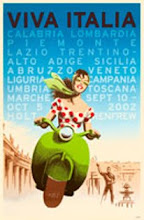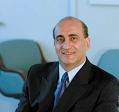
Cross posted from American Power
Hat tip to Great Satan's Girlfriend
By Donald Douglas
Friday, October 17, 2008
Even the most sophisticated political science models are likely to exclude relevant variables contributing to the outcome of a presidential election, and thus - while often quite good - I've normally considered presidential forecasting research as knife-sharpening exercises rather than particularly reliable predictions of general election voting outcomes.That said, with the intensity of this year's race more dramatic than any election in my lifetime, I've been paying some attention to the symposium on forecasting the 2008 elections at PS: Political Science & Politics, the journal of the profession at the American Political Science Association.The symposium features ten research articles, both on the presidential race and the congressional elections.Considering all the attention in the media and the blogosphere to a seeming Barack Obama November landslide, readers might want to mull over the piece from James Campbell, "The Trial-Heat Forecast of the 2008 Presidential Vote: Performance and Value Considerations in an Open-Seat Election."Campbell's model combines Gallup's Labor Day "trial-heat" poll findings (head-to-head polls) with second-quarter GDP growth rates into a forecasting model that - in its most recent specifications, from 1992 to 2004 - has been accurate within one-half a percentage point of Gallup's final pre-election survey.
Here's how Campbell describes the model (with citations excluded):
In drawing heavily upon the preference polls, the models reflect both retrospective and (pre-campaign) prospective evaluations by the voters. While some voters may simply cast a verdict on whether they are satisfied with the performance of the in-party, other voters evaluate the issue positions, values, and character traits of the candidates and can do much of this even before the general-election campaign gets underway. Yet others may weigh both retrospective and prospective considerations in forming early vote inclinations. Unlike approval ratings, the trial-heat polls tap evaluations produced by whatever mix of prospective and retrospective considerations that voters in a particular year find convincing. The use of the early preference polls also allows the forecast to reflect the candidates’ relative success in uniting their parties’ bases at the outset of the campaign. This is an important aspect of the models since early party unity is more important to the overall vote than either the unity of partisans deciding later in the campaign or the division of later-deciding swing voters."Retrospective voting" refers to voters deciding their pick on the basis of the incumbent party's past policy performance: "What have you done for me lately?"
What Campbell finds, however, is that trial-heat models don't assume retrospective evaluations as a valid predictor of voter outcomes. What's key is that candidates matter, but also that open-seat elections are more closely decided presidential races (than when an incumbent is running for reelection), and that "dead-heat" contests are more likely in a open-seat election within a competitive party system environment.Frankly, that sounds a lot like the state of the 2008 campaign is it now stands. As of today, Gallup shows a virtual dead-heat in the presidential horse race, with Barack Obama leading John McCain 49 to 47 percent among likely voters. As Campbell notes:
In short, the greater competition and less retrospective character of open-seat elections makes preferences polls particularly better suited than presidential approval ratings to predict the vote in open-seat elections."Preference polls" are those on the incumbent president's public approval ratings, and the implication here is that George W. Bush's historic low approval rates are likely to have a marginal impact on the outcome of the election.Here's Campbell's conclusion:
There are ... however, good reasons to think that a big Obama win might not be in the cards. If voters are not purely retrospective or, at least, consider the presidential candidates’ records as well as the administration’s performance, if open-seat elections are more prospectively decided and more closely fought, and if elections for third-terms are fought on a level playing field rather than one tilted against the in-party, then we may be in for tight race....
So, what should we anticipate? What are the forecasts of the trial-heat forecast and its companion convention bump equation? First, the Bureau of Economic Analysis’ August release of the real GDP growth rate in the second quarter was 3.3%(annualized). Second, the preference poll conducted by Gallup from September 5 to 7, the first poll in September after the conventions, indicated that 49% expressed a preference for Senator John McCain, 44% expressed a preference for Senator Barack Obama, and that the remaining 7% favored a third-party candidate or were undecided. Converted to two-party preferences, Senator McCain as the in-party candidate had 52.7% of the two-party split. Plugging the second-quarter growth rate and the Labor Day preference poll numbers into the trial-heat equation produces a forecast that Senator McCain should be expected to receive 52.7% of the two-party popular vote. Based on the out-of-sample errors of this equation, the likelihood that Senator McCain will receive the vote plurality is 83%. The companion convention-bump equation predicts a vote of 52.2%. This is based on the pre-convention preference poll split of 50% for McCain, a net convention bump of 2.7%, and the secondquarter GDP growth rate used in the trial-heat forecast equation. Based on the out-of-sample errors of this equation, there is a 76% probability that Senator McCain will receive a plurality of the national two-party popular vote.As noted in the introduction to this post, election forecasts are limited to the variables specified in the model, and Campbell's forecast doesn't seem to be catching the impact of dramatic late economic shocks (like the past few weeks), as well as other factors unique to this year, such as considerably likely variation between reported survey responses and actual election day vote-behavior (the possibility of a "Bradley effect" dampening the support for the Democratic ticket).
That said, given uncertain market trends (up-and-down again stock rallies), the potential effect on the polls from John McCain's improved debate performance, and the unknown impact of party mobilization and youth turnout on election day, this race is going down to the wire as a potentially 50-50 election. Given this analysis, the GOP ticket is performing much better than would be expected in this year's prevailing electoral environment, and it's way too soon to be announcing a Democratic Party landslide.
Footnote: Skeptics of the case made here are encouraged to check some of the other research pieces at the symposium, especially, Robert S. Erikson and Christopher Wlezien's, "Leading Economic Indicators, the Polls, and the Presidential Vote."
Donald Douglas is an Associate Professor of Political Science teaching in Southern California.





























.jpg)









.jpg)




































































.jpg)

.jpg)











.jpg)



















I wonder how many of the people polled are saying Obama so they don't seem to be a racist to the pollster? I trust only one poll. The one the American people will do on Nov. 4th. All others are fake.
ReplyDeleteThat is actually fascinating. I regularly go to American Power where the Professor writes and I must say 95% of the time you walk away learning a little something. Interesting, thanks.
ReplyDeleteRoGeRbAbE!
ReplyDeleteAm Pow is essential reading in the millennium, Dr Douglas is an avatar in exponential exportation of American Exceptionalism and regularly reveals that America is indeed the "Indespensible Nation."